From The Turnpike to CR 234 – The Latest on Fifty Miles of Improvements
There is no doubt that I-75 is near capacity. To accommodate the projected population growth and increased truck traffic, the road’s capacity will have to be expanded.
Over the next 20 years, Marion County’s population will grow by about 150,000 new residents to reach nearly half a million people. In addition, the industrial warehouse space will increase to a total of 17M square feet. About half of the existing 11M square feet of industrial warehouse space is used by five distribution centers and an additional six million square feet of industrial warehouse space will be completed over the next 12 to 18 months.
This exponential growth will stretch the capacity of I-75 to its limits.
I-75’s capacity issues have been on the Florida Department of Transportation’s (FDOT) radar since 2016, with the formation of the I-75 Relief Task Force. The top recommendation from the Task Force was to improve the capacity of I-75. The second recommendation was to improve existing roads such as 41, 441 and 301.
In 2018, the Coastal Connector was proposed by FDOT, but since that was rejected, I-75 became the focus again in 2019. (The Northern Turnpike Extension was proposed by the Florida Turnpike Enterprise (FTE), which is part of FDOT in 2021).
Scope Of The Project
In 2021, FDOT decided to take a step back and refresh the Master Plan for I-75. The project starts in Sumter County at the northern terminus of Florida’s Turnpike in Wildwood and goes north for 47.8 miles to County Road (CR) 234 just north of Marion County.
The Master Plan will only evaluate upgrading I-75 within the existing corridor. The project is divided into two sections for the purposes of the study.
Section 1 starts at the Florida Turnpike to 22.5 miles north to State Road (SR) 200.
Section 2 starts at SR 200 in Marion County to 25.3 miles north to County Road (CR) 234 in Alachua County.
Timeline
The work on the I-75 Master Plan began in June, 2021. The draft Master Plan report will be available sometime in June, 2022. A public meeting will be held in summer, 2022 for public comment and the final Master Plan report is due in November, 2022. The next phase is PD&E followed by Design and Construction. The FDOT Project Manager for the I-75 Master Plan is Mary McGehee. FDOT is also working with two consulting engineering firms, Volkert and HDR, Inc. to conduct the I-75 Master Plan study.
“The Master Plan will look at the short-term and the long-term solutions,” said Steven Schnell, an engineer with HDR, Inc. “The long-term solution looks out to 2050 and what needs to be done. This is such a long corridor and it will be implemented in phases to determine what is the best strategy and plan going forward.”
Some of the short-term solutions include enhanced ramps and better signals at some of the interchanges. The intersections at CR 236, SR 40 and SR 200 will also be improved.
“The biggest issues are at CR 326,” said McGehee. “That’s where the trucks are getting on and off of I-75. The two truck service centers at this intersection also adds to the congestion as the trucks intermingle with the cars.”
The long-term improvements will be included in the Master Plan study and potentially include adding two additional lanes and new interchanges. The goal is to improve the traffic flow and safety, and to further reduce the amount of time to clear traffic incidents. The variation in the traffic due to the holidays, weekends, inclement weather, incidents and the truck traffic will also be addressed in the report.
Ocala’s Strategic Location
FDOT has the Herculean task of planning for the future transportation needs for Marion County. The good news is that the majority of the road improvements are made within existing corridors.
Marion County is growing quickly and the roads must also grow. Ocala’s strategic location between several major cities and readily available land along I-75 is one of the reasons several large distribution centers have chosen Ocala for their relocation or expansion needs. For tourists and commuters, I-75 is also the most direct route to the Turnpike and to south Florida’s popular west coast.
42 Projects
There are currently 42 FDOT projects in Marion County that are at various stages. You can submit comments or ask a question about each project on the FDOT District Five website.
We’ll Be Watching
The improvement of I-75 is one of the most significant transportation issues facing the county. I-75 also runs through the Farmland Preservation Area, so we will be monitoring the I-75 Master Plan and attending the public meeting this summer. We thank the FDOT team for updating us about the road improvement project because it will have a tremendous impact on the quality of life in Marion County. FDOT has decades of institutional experience and their goal is to make I-75 better and safer for all travelers.
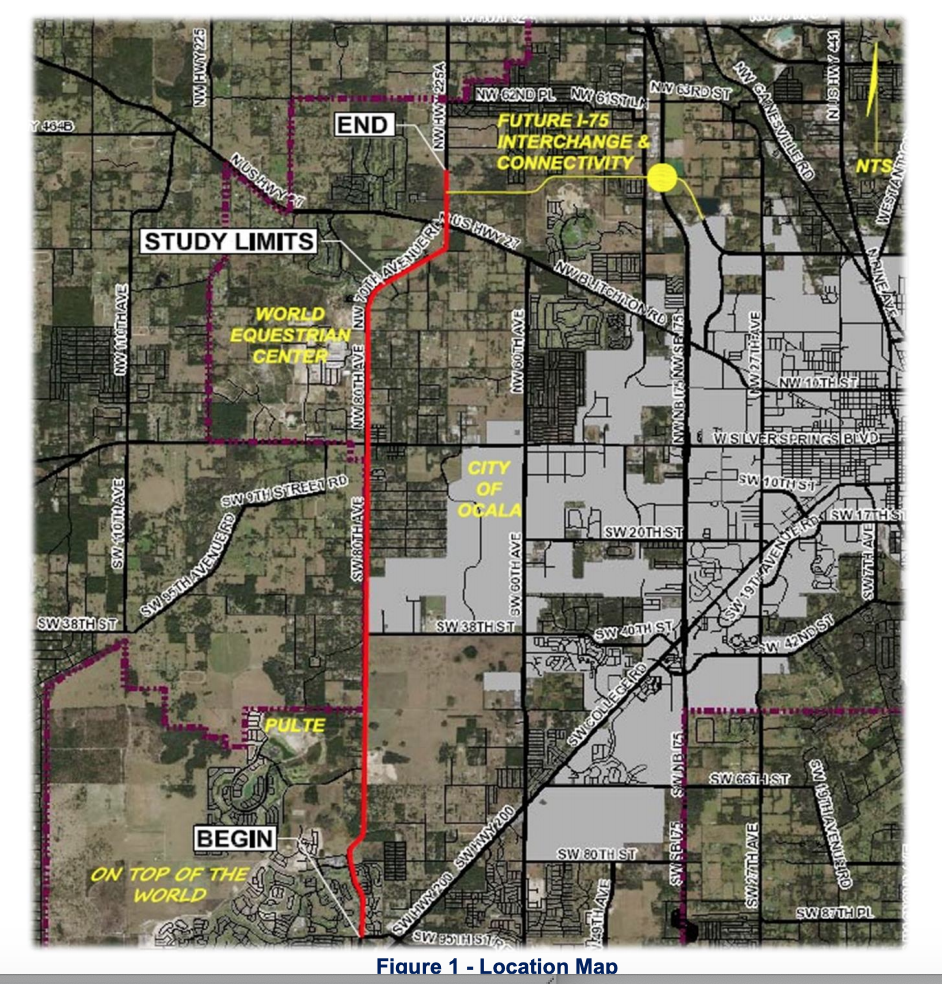
Already In The Design Phase
New I-75 Interchange at NW 49th Street/NW 35th Street
The Florida Department of Transportation (FDOT) is building the new interchange at NW 49th Street/NW 35th Street. According to the FDOT website, the Project Development and Environment (PD&E) Study was completed in March 2021 and the project is currently in the design phase. The FDOT Design Project Manager is Megan Owens and the Design Firm is Metric Engineering.
Construction is anticipated to begin in August of 2024. The cost of the project is approximately $41 million for construction. The estimated time frame for completion is 1 to 3 years.
Read our blog on this project
Link to the PD&E study and a comment form to send comments to FDOT.

What About Zoning?
The Zoning regulations are found in the Land Development Code, which is a separate document with specific guidelines to implement the Goals, Objectives, and Policies of the Comprehensive Plan.
Zoning regulates development through land use classifications and specifies the areas in which residential, industrial, recreational or commercial activities may take place. The Land Development Code was adopted through a series of ordinances by the County Commission, which means that the regulations cannot be changed or waived, except by a further vote of the County Commission.
Always Watching

We work hard to keep you informed, and to represent our members' interests in preserving our horse farms, farmland and the unique character and culture of Marion County's 193,000 acre Farmland Preservation Area.
Join the herd. Every voice matters.

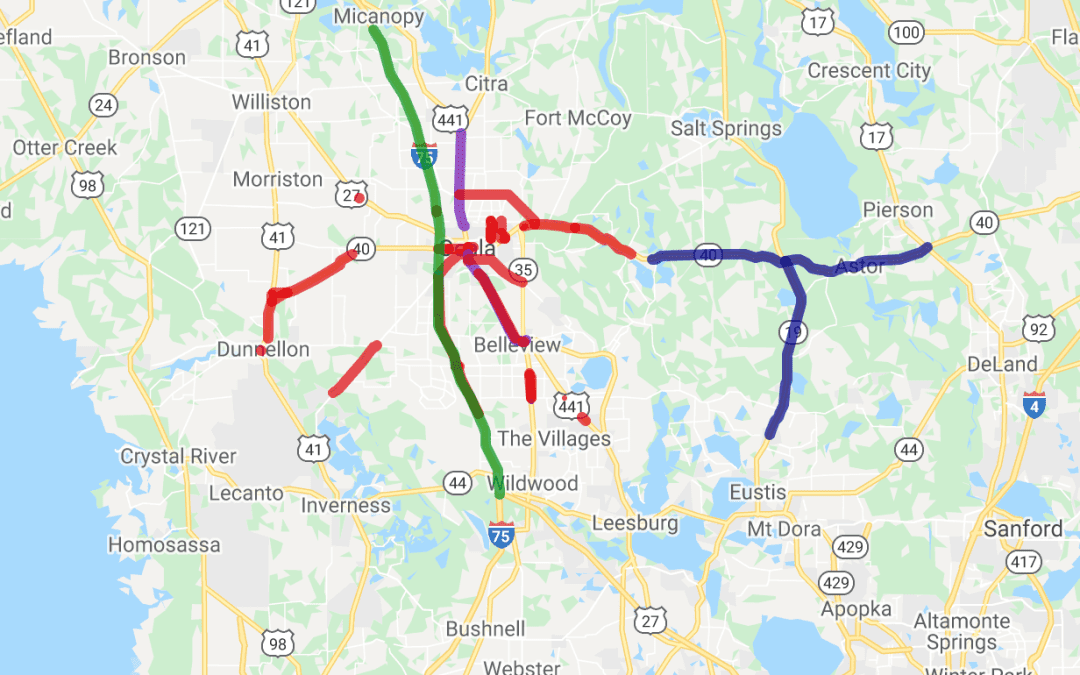
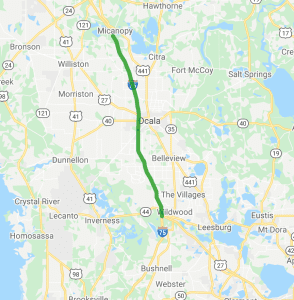
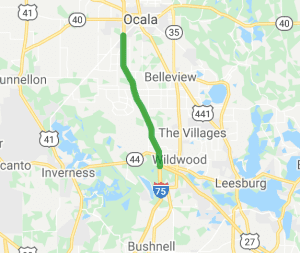
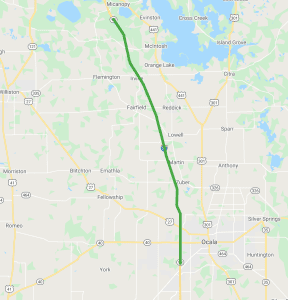
Greetings,
Wondering if the I-75 Master Plan mentioned any improvements for the CR 318 Interchange.
Your recent update about the Sunny Oaks Development Project begs the question .
Thanks for your continued efforts to help protect the Farmland Preservation Area with good analysis and activism.